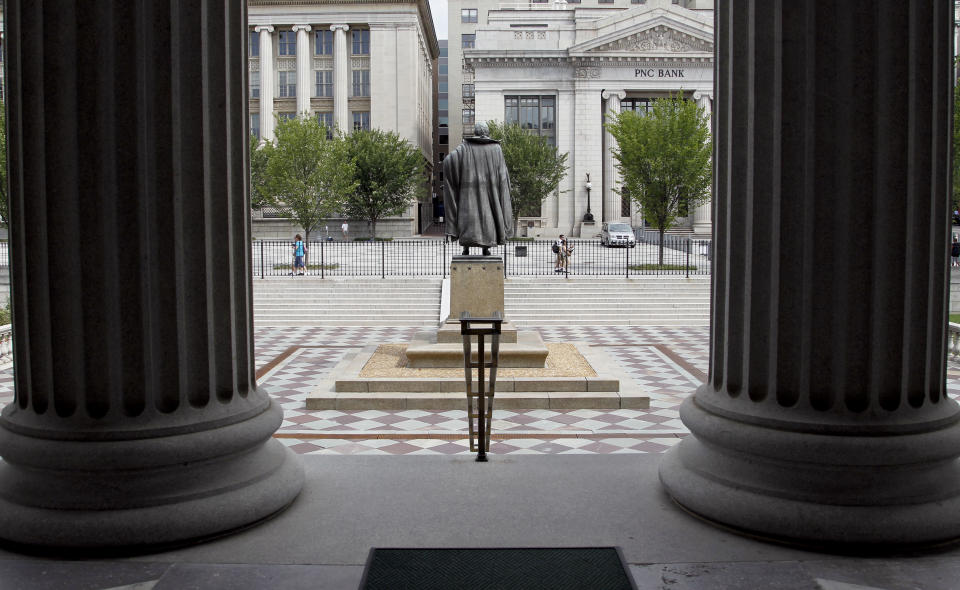Coronavirus could send 10-year Treasury yield crashing below 1% — Here's how
And you thought the record-low yield on the 10-year Treasury note couldn’t go any lower thanks to rising investor fear of a coronavirus pandemic.
Silly, silly.
Wells Fargo Investment Institute president Darrell Cronk said on Yahoo Finance’s The First Trade yields on the 10-year could reach 1% sooner rather than later if uncertainties on coronavirus ratchet up. In fact, Cronk’s 12-month model suggests if the coronavirus sends the U.S. into recession, the 10-year Treasury yield could nosedive to 0.4%.
Most at risk from the sharp decline in yields are financials like JPMorgan, experts say, as they will earn less on loans in such a low rate environment. While one would think the housing sector benefits from lower rates on the 10-year, BUT even that is no surefire bet if consumer confidence takes a hit from the coronavirus and people put off homebuying this spring.

Hearing that type of prediction from Cronk coming into the year would have once been unthinkable. Equities were simply on fire. Heck, hearing that dire warning just a few weeks ago with equities rallying to record highs would have been eye-popping. But such is the short-term new normal as the coronavirus spreads globally, hammering the financials of companies such as PayPal, MasterCard, Apple and Microsoft and sending investors flooding into the ultimate safe haven in Treasuries and gold.
The 10-year Treasury yield dipped below 1.3% to a new record low on Thursday as investors continued to dump stocks amidst a weeks long rout. By early afternoon trading, the Dow Jones Industrial Average fell more than 700 points. The Dow, Nasdaq Composite and S&P 500 all tumbled into correction territory — defined as a 10% fall from a recent high — within minutes of the opening bell on Wall Street.
Brian Sozzi is an editor-at-large and co-anchor of The First Trade at Yahoo Finance. Watch The First Trade each day here at 9:00 a.m. ET or on Verizon FIOS channel 604. Follow Sozzi on Twitter @BrianSozzi and on LinkedIn.
Read the latest financial and business news from Yahoo Finance
Beyond Meat founder: things are going very well with McDonald’s
Starbucks CEO on what China has in store for the coffee giant
Follow Yahoo Finance on Twitter, Facebook, Instagram, Flipboard, SmartNews, LinkedIn, YouTube, and reddit.

 Yahoo Finance
Yahoo Finance 